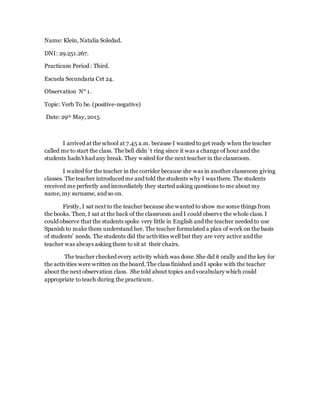This document contains summaries of 4 classes taught by Natalia Klein during her teaching practicum. The classes covered topics such as the verb "to be" in positive, negative, and interrogative forms, jobs, places in the city, and the structure "there is/there are". Klein observed that the students spoke little English initially but seemed more confident over the classes. She used strategies like modeling, exemplifying, and paraphrasing to help students understand and participate. The students generally did activities well but required examples and correction on pronunciation.










